| The University of
Manchester |
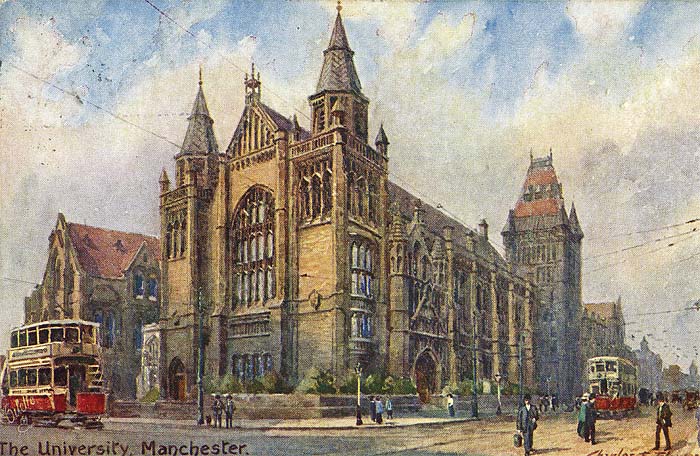 Just beyond the Booth Street junction with Oxford Road a footbridge crossed Oxford Road proudly declaring that you entering the University of Manchester. Manchester is the UK’s most popular University with more than 64,000 undergraduates applying in 2007. The univ ersity offers 500 different degree programmes via 23 academic schools a hundreds of specialist research groups. This learning is supported by libraries that hold 4 million printed books and manuscripts, over 41,000 electronic journals and 500,000 electronic books. The students can enjoy the UK's largest SAtudents' Union and all first years are guarranteed a place in the university's 9,200 bed accommodation service.  The history of the university
can be traced back to a legacy from a wealthy Manchester business man,
John Owens. John was educated in Ardwick and later became a
partner in his father's business. As their business grew they
became involved in trading calico around the world and importing
cotton, hides wheat and other commodities. John Owen died at his
house in Chorlton-upon-Medlock in 1846 leaving a bequest of £96,654 for
the foundation of a college.
 The money was used to purchase Richard Cobden's former home on Quay Street which became the first home of Owens College in 1851.  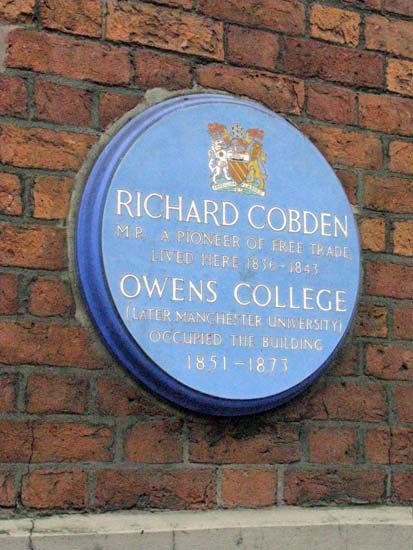 In later years Owens College
moved to premises on Oxford Road and in 1880 it was granted a Royal
Charter to become England's first civic university as The Victoria
University of Manchester.
 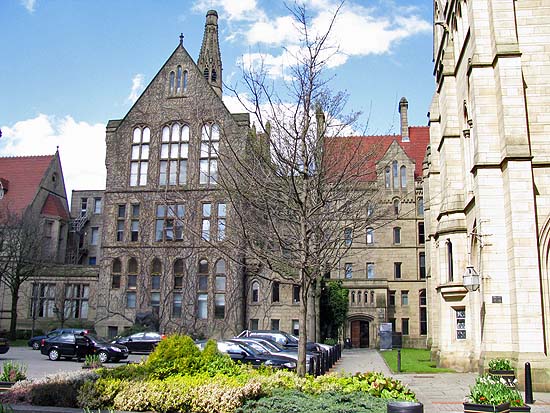      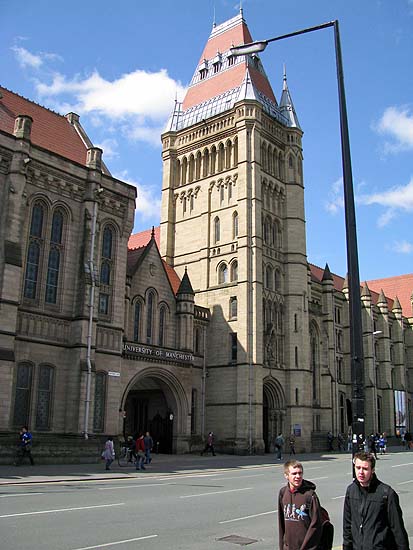 Another important educational force in Manchester at the turn of the 20th century was the Mechanics' Institute which was the forerunner of UMIST, a Faculty of Technology that worked alongside The Victoria University of Manchester.  The Mechanics' Institute on Princess Street  The UMIST Main Building on Whitworth Street The Victoria University of Manchester became The University of Manchester and UMIST achieved independent university status in 1955. However, the two universities continued to work together and in October 2004 they merged under the name of the University of Manchester.  The University of Manchester
lays claim to 23 Nobel Prize winners amongst its current and former
staff and students includin Ernest Rutherford whose pioneering research
that led to the splitting of the atom, Kilburn and Williams who
developed the first computer in 1948 that they called "Baby" and
Bernard Lovell who built the world's largest steerable radio telescope
at Jodrell Bank.
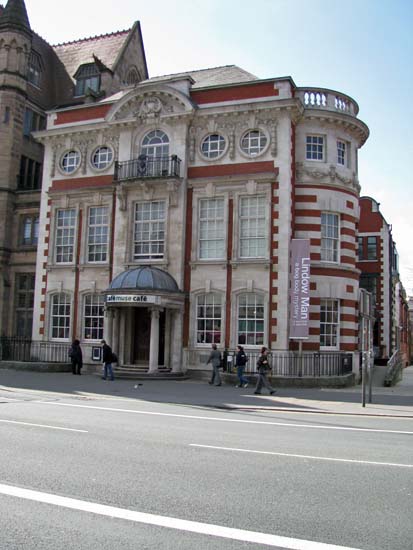 The former School of Dentistry now the Manchester Museum Café 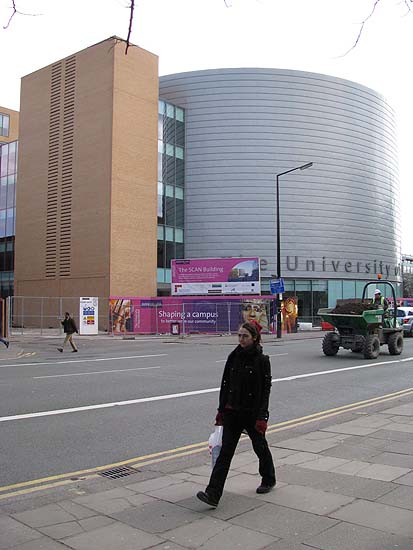 As you can see from the
billboard outside this new building on Oxford Road it was to be called
The Scan Building. However, it has already been renamed
University Place. Shown here in April of 2008 you can see that it
is still under construction. When it is completed the university
claims that it will be a "world-class conference venue which will be
second-to-none in the Northwest. University Place, on Oxford
Road, at the heart of The University of Manchester campus, will
feature: a 1,000 seat semi-circular auditorium (divisible into two
theatres of 600 and 270), Additional 24 flat-floored seminar rooms
accommodating 20-120 delegates, a 500 sq m exhibition area and adjacent
marquee space, a 400 seat restaurant, Wi-fi access to exhibition and
restaurant areas, and high spec audio visual aids and professional
technicians on site.
|